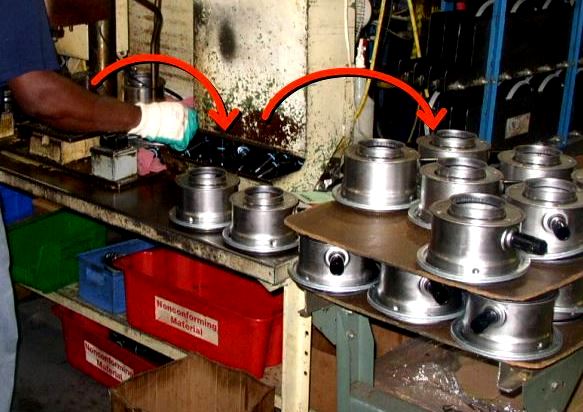 |
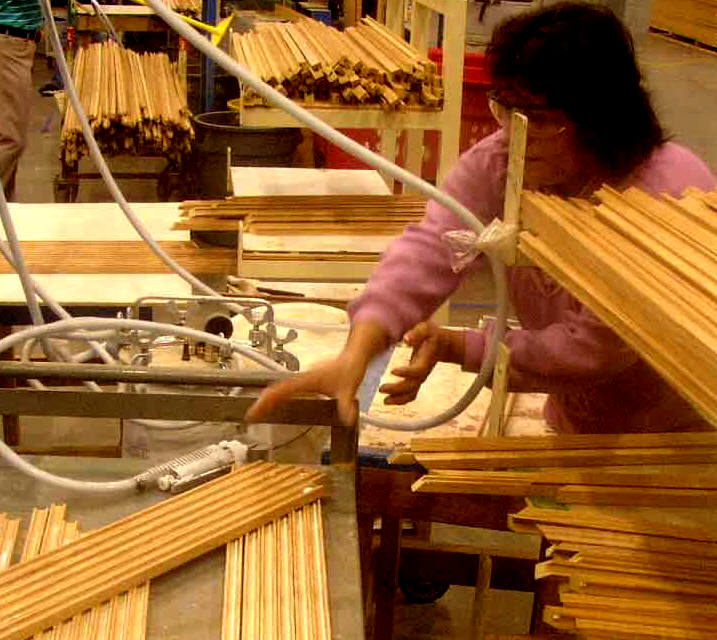 |
| Double handling | Cross-body reach |
Background
Layout issues can be considered on two levels:
- Between workstations — usually an issue of time and distance to carry or handle items
- Within the workstation — typically issues of long reaches, congestion, and wasted steps
Many layout issues dovetail with other topics in this knowledgebase, which can be reviewed for ideas that can be used to solve problems. For example, to resolve the issues in the photos above, there are a multiple material handling techniques that could be incorporated.
Objectives
Follow basic principles, optimize flow, and be well-organized
Ideas and Options
The basics
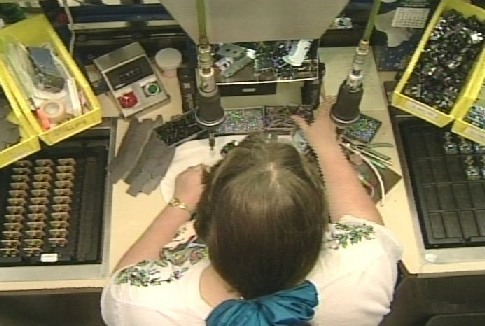 |
| Good workstation layout |
Good layout starts with a solid understanding of the tasks that need to be performed. As described in more detail in How to design a workstation, the initial focus the item being worked on, its position and its orientation. The layout should be designed around that focal point: how the product and components are moved in and out, intelligent location of tools and materials, and insuring that the basic design principles are being met, i.e., good working position, minimal reach, good clearance, etc. Virtually everything in this knowledge base provides ideas that can be incorporated to achieve good layout.
5S
 |
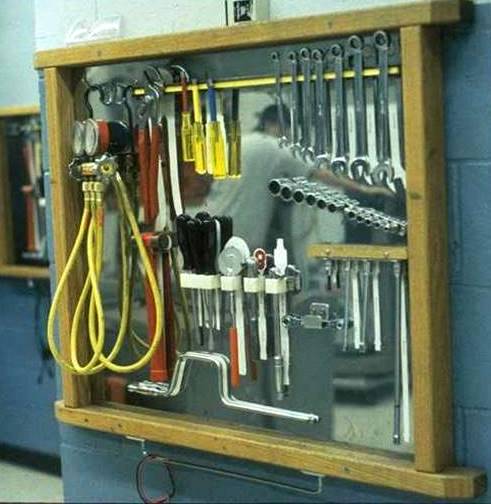 |
| Extra time and effort to find things | Good layout |
5S basically means “a place for everything and everything in its place (and making sure it’s in the right place).” The S’s originated with Japanese words that have been rendered into English as Sorting, Straightening, Shining, Standardizing, and Sustaining.
The 5S process is critical in creating good layouts by (a) identifying precisely what tools and materials are needed, and (b) defining logical places to put them. Infrequently used items can be relocated to an appropriate storage area and unused items can be discarded.
Flow
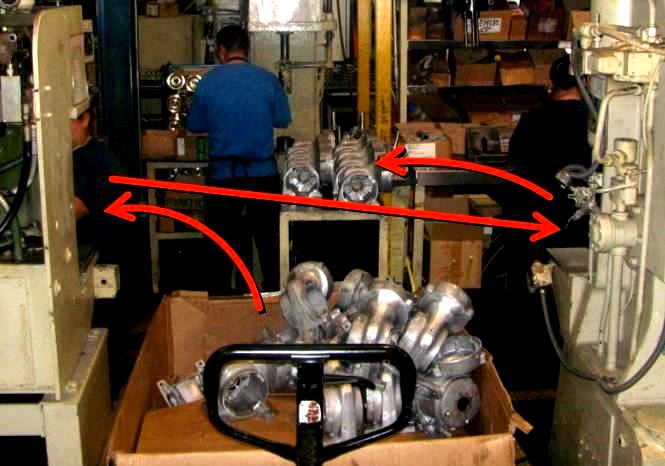 |
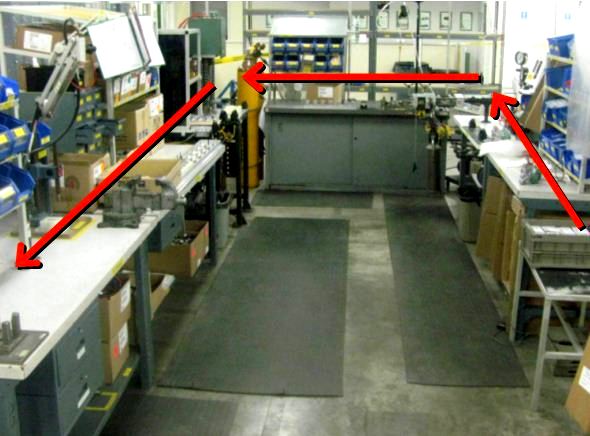 |
| Awkward flow | U-shaped cell |
The concept of flow should be kept in mind when setting up layouts. General rules include the following:
Unidirectional movement (no back-and-forth; keep operations in sequence)
- No cross flow
- Minimal travel distance
- Good access to aisle ways
- Present materials in the orientation needed for the operation
- Equalize heights to facilitate movement
The U-shaped work cell is a good example of a common approach to meet these rules.
Strategies for arrangement
Four different strategies are commonly used to lay out work areas. The first two strategies have to do with how items are grouped and the latter two on the ease of access.
Sometimes all of these strategies can be incorporated simultaneously. In other instances, the strategies can be mutually exclusive and you must choose among the approaches for the one best suited to the task at hand. The point is to follow a strategy rather than place things haphazardly.
Groups
Some items can be grouped together because they perform the same function or they are always used in a certain order
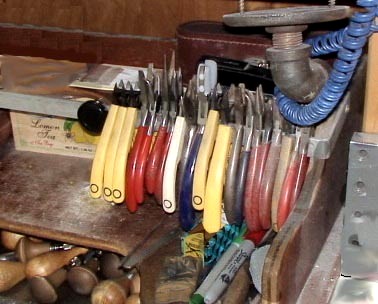 |
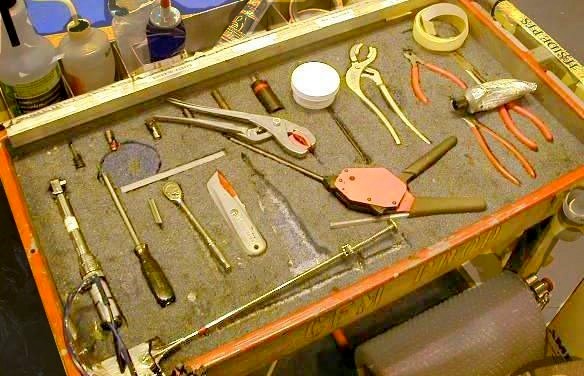 |
| All of a kind together | All necessary tools for specific task |
1. Function — Classify items that are functionally related and then group them. The group can be either (a) all similar items together, or (b) the set of items needed for a routine task kept in a separate organizer. In some instances, it is efficient to buy duplicate tools to keep in different sets.
 |
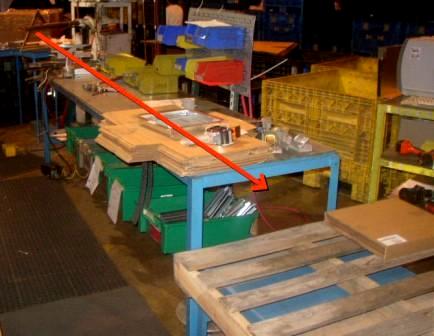 |
| Before: Wasted steps | After: In sequence |
2. Sequence — Identify items that are always used in a certain order and then locate them in that order.
Easy Access
Other items need to be placed close to you because they are frequently used or are important on occasion.
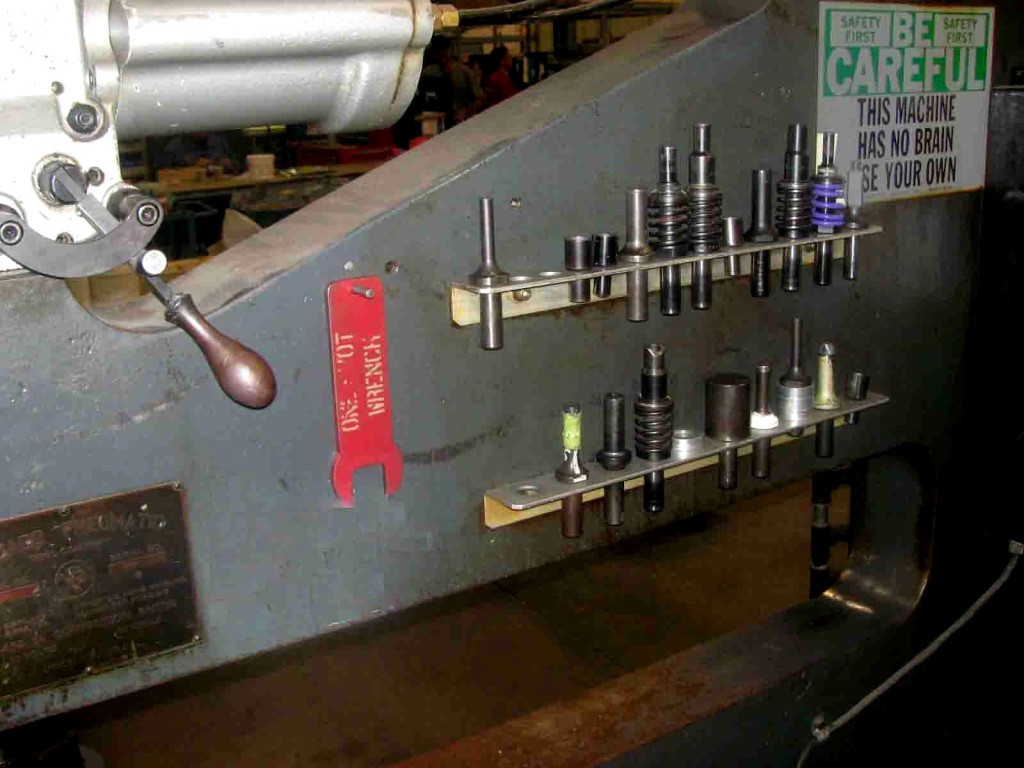 |
 |
| Good: Frequently used items at point of use | Poor: Unused items in the way |
3. Frequency — Determine how often you use things. Items routinely used should be located close at hand. Items infrequently used should be placed out of the way.
4. Importance — Identify any critical items that you use. Even though they may be used infrequently, they should be easily accessible when you need them. Location of fire extinguishers or heavy objects are good examples.
– – –
Note that these strategies can appear simplistic and self-evident; indeed, the underlying problem is usually not the difficulty in grasping the concepts. Rather, the common problem is either that (a) that no time has been devoted to evaluate and apply the concepts, or (b) bad habits have crept in over time and personnel have unwittingly become accustomed to a bad situation.
Additionally, do not underestimate the power and significance of these strategies for arrangement. In manufacturing, a huge and expensive core issue is whether to organize production based on function or on sequence. For example, in some facilities, all machines of the same kind are put into one department and all machines of another kind are put into another department. In other facilities, several different types of machines are all put together in sequence to form a work cell. The implications can be profound, and determining which system is better in any particular operation is not always self-evident.
